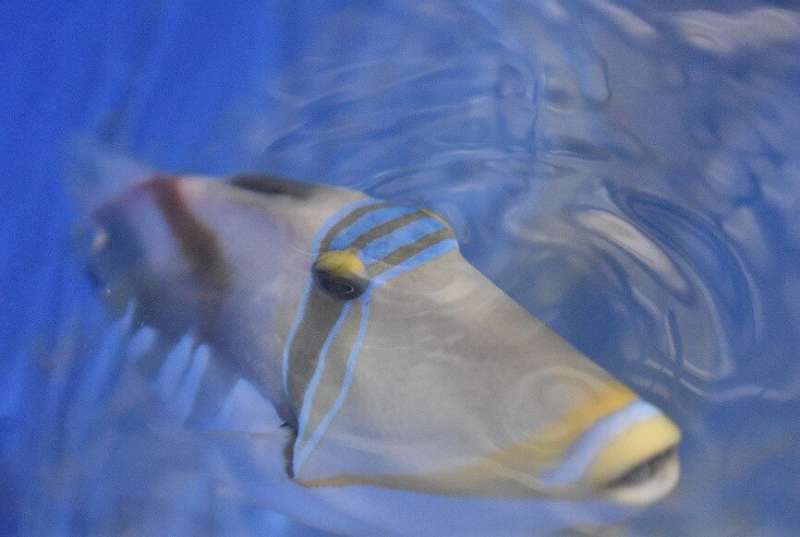Natural light flicker can help prevent detection

Movement breaks camouflage, making it risky for anything trying to hide. New research, published in the Proceedings of the Royal Society B today has shown that dynamic features common in many natural habitats, such as moving light patterns, can reduce being located when moving. Dynamic illumination is particularly common in coral reefs, where patterns known as 'water caustics' play chaotically in the shallows. Researchers from the University of Bristol and the University of Queensland carried out behavioural experiments on the Great Barrier Reef, Australia.
Wild Picasso triggerfish (Rhinecanthus aculeatus), a common reef fish, were trained to locate and attack moving prey items within computer-simulated scenes on a Waterproofed iPad. Each scene contained 'water caustics' that varied in terms of motion (static or moving), scale (fine or coarse) and sharpness (sharp or diffuse), to illustrate the diversity of water caustics seen in natural habitats.
The presence of water caustics significantly increased the time for triggerfish to attack moving prey items compared to static caustic controls. Moreover, manipulating the sharpness and scale of water caustics implies that this delay should be maximised in shallow water: scenes with fine scale and sharp water caustics induced the longest attack latencies.
Dr. Sam Matchette, a former Ph.D. student in the University of Bristol's School of Biological Sciences and lead author, said: "Our research is the first to address the impacts of dynamic underwater illumination upon fish behaviour and directly assesses how visual features of water caustics can affect visually guided behaviour."
![Movement breaks camouflage, making it risky for anything trying to hide. New research, published in the Proceedings of the Royal Society B today [1 April] has shown that dynamic features common in many natural habitats, such as moving light patterns, can reduce being located when moving. Credit: University of Bristol Natural light flicker can help prevent detection](https://scx1.b-cdn.net/csz/news/800a/2020/2-naturallight.jpg)
While being stationary remains the optimal strategy for the concealment of cryptic organisms, the findings here highlight conditions under which the disadvantage of moving can be reduced to some degree.
Dr. Matchette added: "Due to the direct impact upon foraging efficiency, we predict that the presence of dynamic water caustics will have important consequences for decision-making regarding habitat choice and foraging by both wild prey and predators."
More information: S. R. Matchette et al, Underwater caustics disrupt prey detection by a reef fish, Proceedings of the Royal Society B: Biological Sciences (2020). DOI: 10.1098/rspb.2019.2453
Journal information: Proceedings of the Royal Society B
Provided by University of Bristol

















